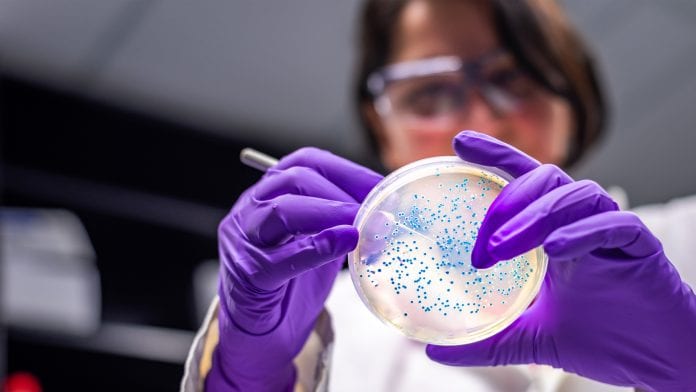
Researchers are hoping to exploit the processes of ribosomes for the development of novel antibiotic agents.
Ribosomes are an essential component of all living cells, translating genetic information into chains of linked-up amino acids known as proteins. The formation of ribosomal components involves multiple ‘helper’ proteins, one of which – protein ObgE – guides the process. If this process cannot take place, the cell dies, including in bacteria such as E. coli. Now, researchers from Charité, Universitätsmedizin Berlin, are hoping to exploit this circumstance for the development of novel antibiotic agents, which would be designed to interfere with the process of ribosome formation in a way that inhibits their assembly.
The research has produced the first-ever image-based reconstruction of this process and has been published in the journal Molecular Cell.
Understanding ribosome processes
Ribosomes consist of one large subunit and one smaller one. The team, led by Dr Rainer Nikolay of Charité’s Institute for Medical Physics and Biophysics, focused on studying the nature and development of the larger subunit in the E. coli to identify points in the process which might serve as targets for new antibacterial and antimicrobial drugs.
To do this, they isolated and visualised the precursor stages of this subunit using cryo-electron microscopy imaging at near-atomic resolution.
Dr Nikolay said: “We now have a better understanding of the way in which the larger bacterial ribosomal subunit develops at the molecular level, although our understanding remains far from complete.”
“It is a coincidence that we are currently in the middle of a viral pandemic. The next pandemic could easily be of bacterial origin because both bacterial antibiotic resistance and multidrug resistance are spreading rapidly, across species barriers,” said Professor Christian Spahn, Director of Charité’s Institute of Medical Physics and Biophysics.
To study the process, the researchers marked one of the key agents, the protein ObgE with a ‘Strep tag’ – which involves the use of a ‘gene knock-in’ procedure, inserting genetic information into the genome. The bacterium will then only produce marked ObgE which can then be visualised using an electron microscope after minor processing, allowing the researchers to study the complex for the first time.
Dr Nikolay said: “We found that this precursor is covered in multiple helper proteins, which either interact or directly communicate with one another. The ObgE protein takes on a key role in this process, effectively directing and co-ordinating it.”
Nikolay says that this process could constitute a target for new drugs, which might stop bacterial growth by inhibiting the assembly of functional ribosomes. He added: “We were able to reveal the existence of both conserved and divergent evolutionary features between prokaryotes – such as bacteria – and eukaryotes – organisms whose genetic information is contained inside a cell nucleus. These findings are important if we are to target features specific to bacteria while also protecting human cells against unwanted side effects.”







